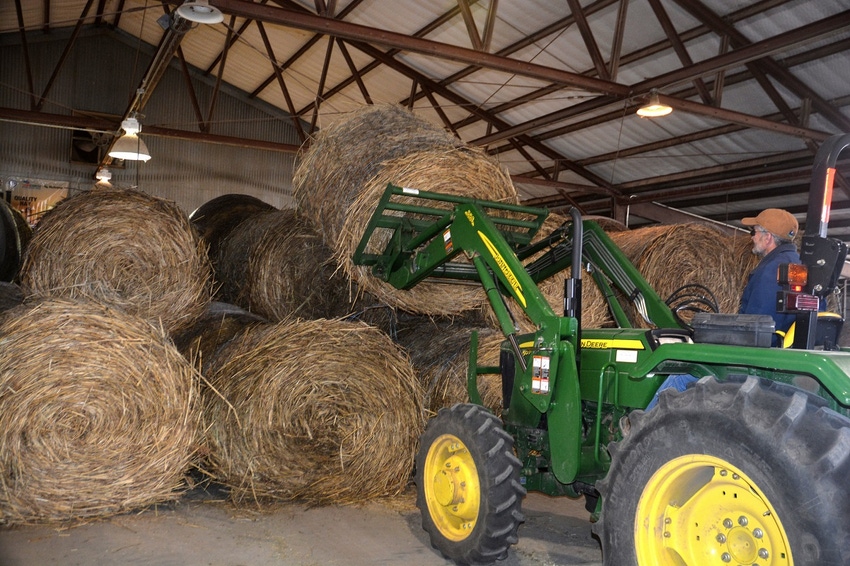April 20, 2018

The generosity of Oklahomans and others living nearby is vital to producers in western Oklahoma who have watched their land, livestock and properties go up in flames over the past week.
The wildfires, combined with the yearlong drought, have left a lot of producers relying on hay from other areas to feed their livestock. During the last major fire outbreak, donations were very generous and hay was shipped in from various locations to help people in need. However, some of the hay brought with it invasive species and some producers had to deal with those issues on top of losses they already experienced.
“In an effort to help producers prevent long-term future problems, we encourage them to consider the hay source and whether it is weed free and fire ant free,” said Dwayne Elmore, Oklahoma State University Cooperative Extension wildlife specialist.
The U.S. Department of Agriculture has issued a hay quarantine due to fire ant infestations for Leflore, McCurtain, Pushmataha, Choctaw, Bryan, Atoka, Coal, Pontotoc, Johnston, Marshall, Murray, Garvin, Carter, Love, Latimer, Stephens, Jefferson, Comanche, Cotton, Tillman and Jackson counties.
“Hay from these counties cannot be transported to the remainder of the state unless it comes from a hay producer who has an Imported Fire Ant Compliance Agreement, which means the hay is stored in such a way that it is unlikely to be infested with fire ants,” said Laura Goodman, OSU Cooperative Extension range specialist.
Hay donors need to be aware that certain conditions set forth by the Oklahoma Department of Agriculture, Food and Forestry and the USDA’s Animal and Plant Health Inspection Service must be met in order for hay to leave a quarantine area without restriction.
Baled hay that meets any of the requirements below is not regulated and has no movement restrictions:
• For baled hay that is stacked, all bales except the bottom layer that is in direct contact with the ground.
• Hay that is cut, baled, loaded and shipped without storage.
• Baled hay that is stored on an impervious surface such as hard pan (highly compressed soil), asphalt, concrete, etc.
• Baled hay that is stored elevated above the soil on pallets or tires or stored on landscaping cloth placed over the soil.
Fire ants have a painful sting, and can extensively infest pastures and rangeland with numerous mounds that can damage farm equipment. They also cause damage to highways, roadways and airport runways, and readily infest electrical meter boxes and equipment. They can easily attack and kill small livestock like chickens and ground-nesting birds.
For questions about fire ants, contact Courtney DeKalb, ODAFF plant protection program administrator, at 405-522-5971 or by email at [email protected].
Aside from keeping a watchful eye for fire ants, those accepting hay donations need to be cautious about invasive plants. Specific species of concern are Old World bluestem, Bermudagrass, various thistle species, field bindweed, Russian thistle (tumbleweed) and Kochia.
“Landowners can have a field or baled hay inspected and certified weed free by ODAFF,” said Karen Hickman, invasive species ecologist in OSU’s Department of Natural Resource Ecology and Management. “They look for Canada thistle, musk thistle, scotch thistle and field bindweed. They provide tags to the landowner to tag the hay.”
Producers should ask questions about the hay and work with their county Extension educator to identify potential problem species.
“If possible, producers should consider feeding hay in a confined area so that potential weeds can be closely monitored and controlled in the future in a discrete location rather than across large areas of the pasture,” Hickman said. “We realize producers have immediate needs that must be dealt with. But, we want them to be spared from years of damage from unwanted pests that may be inadvertently introduced from hay.”
For more information about invasive plants, visit https://www.okinvasives.org/.
Source: Oklahoma Department of Agriculture Food and Forestry
You May Also Like




